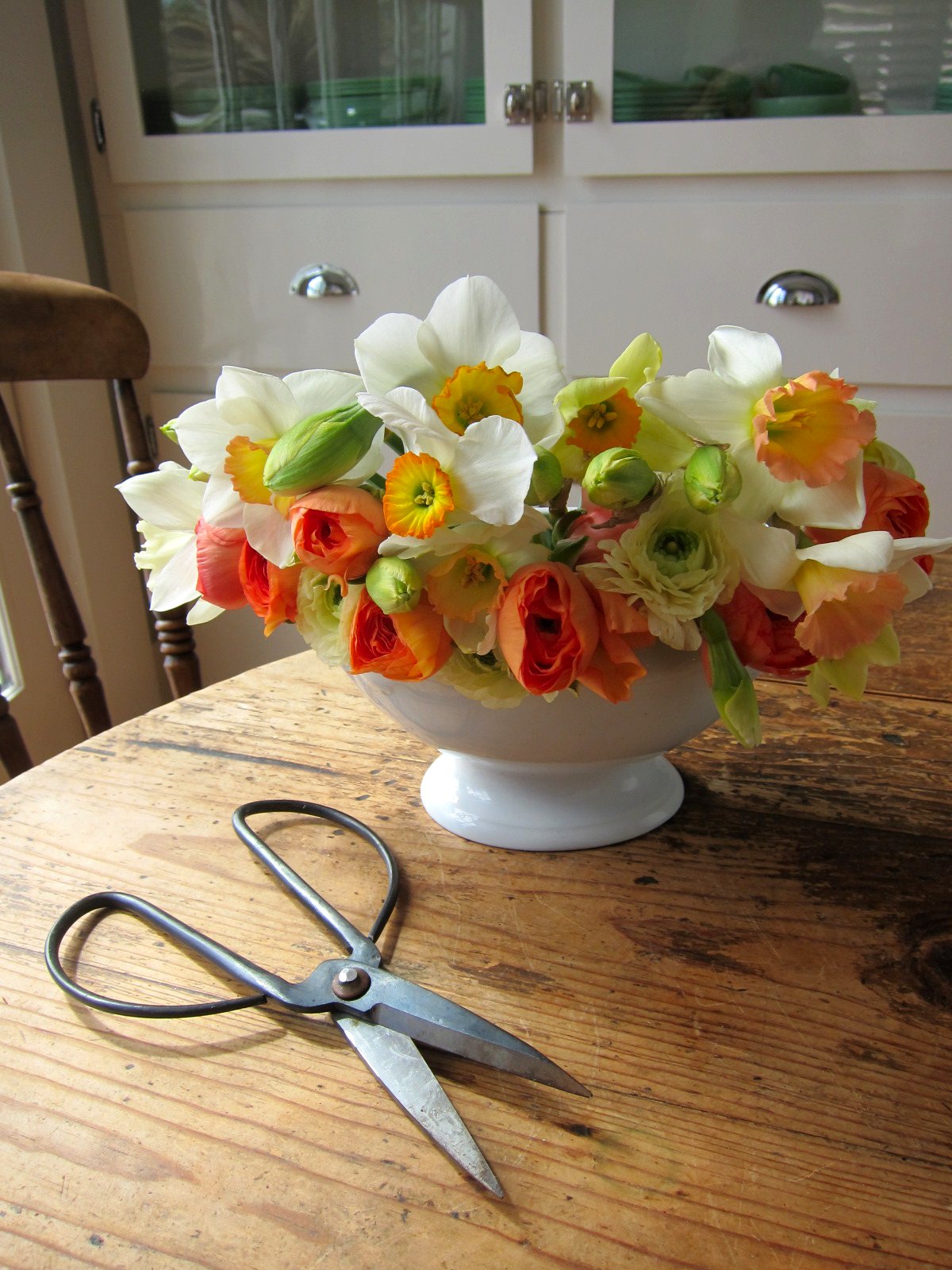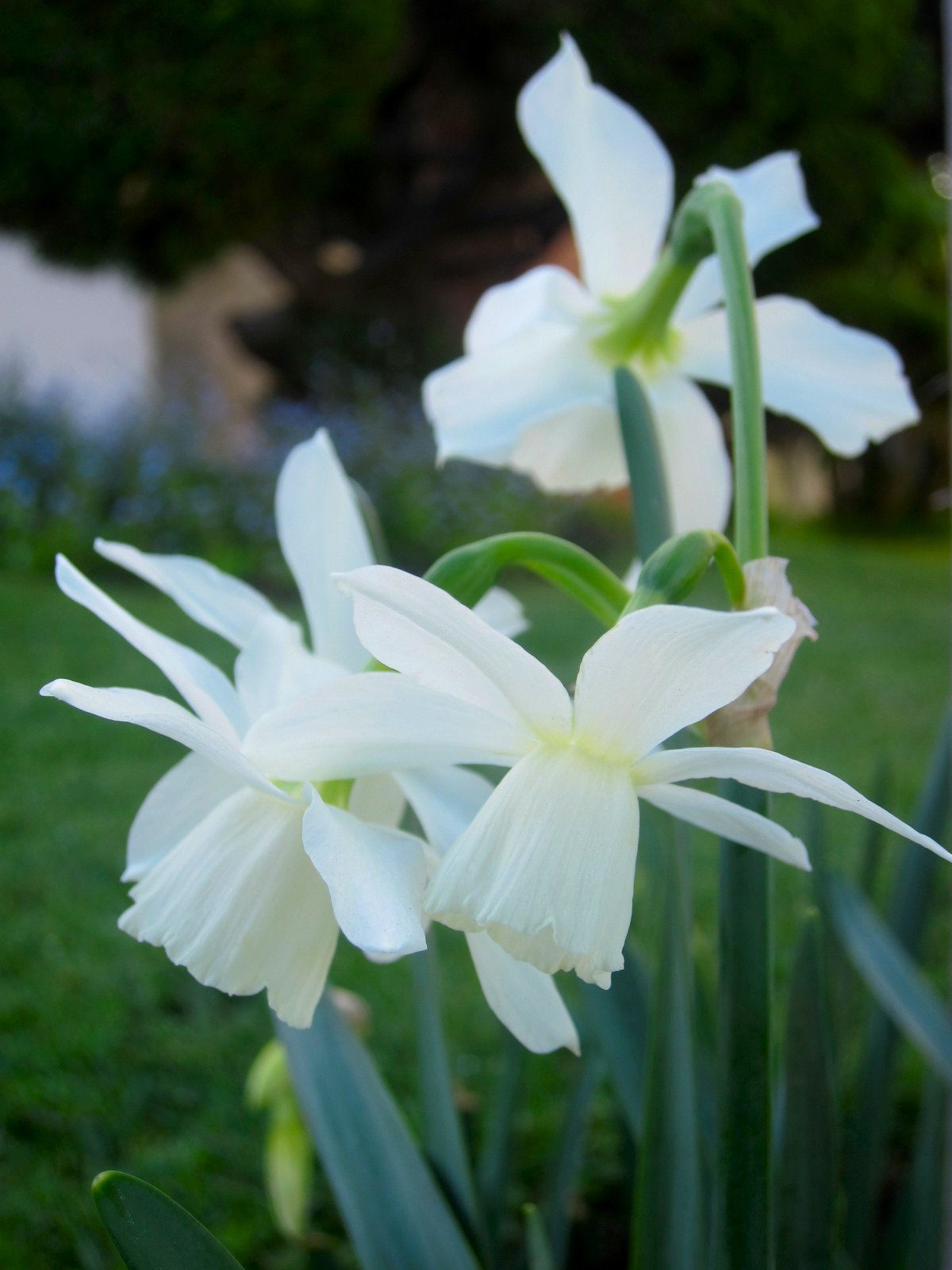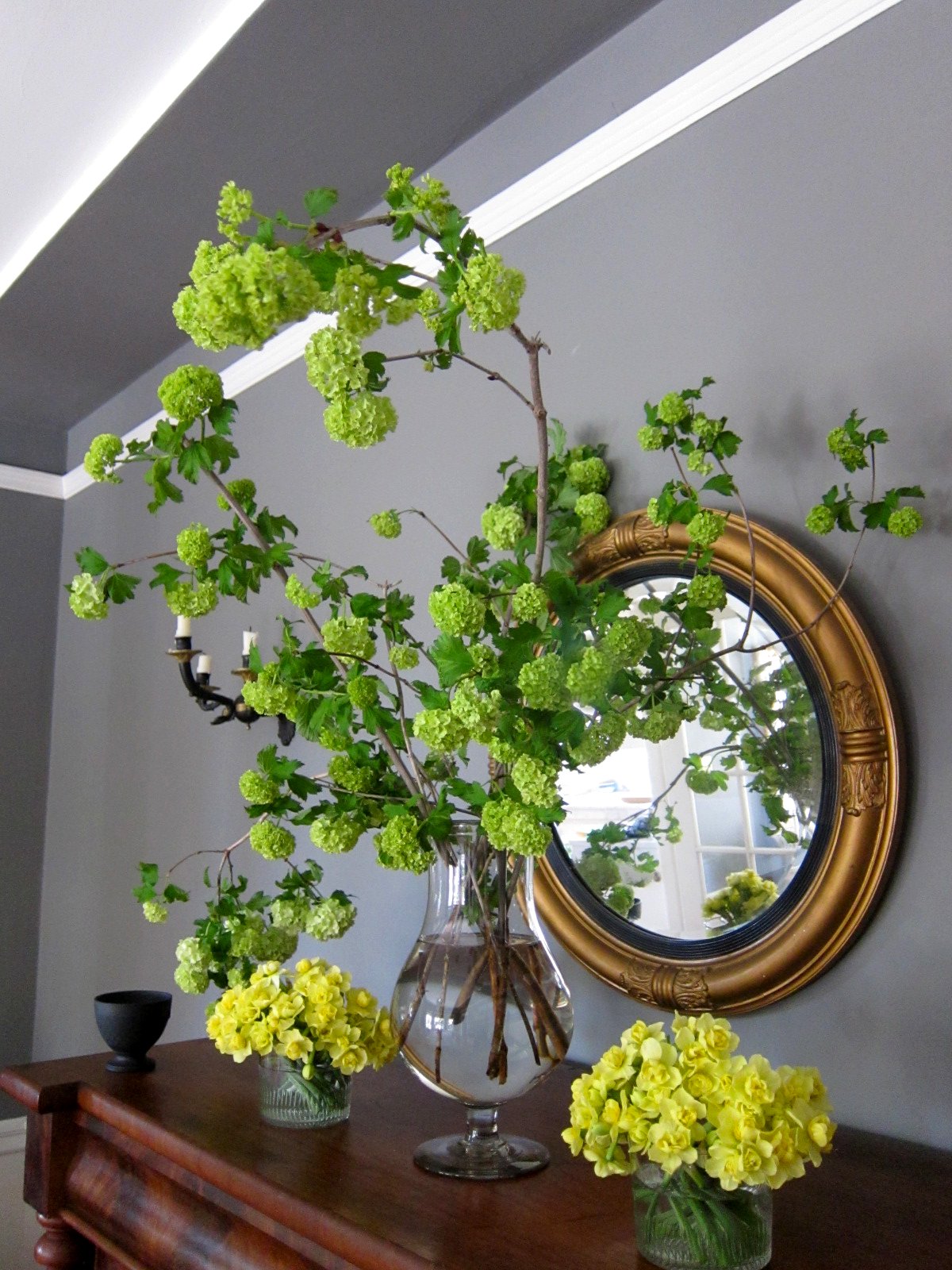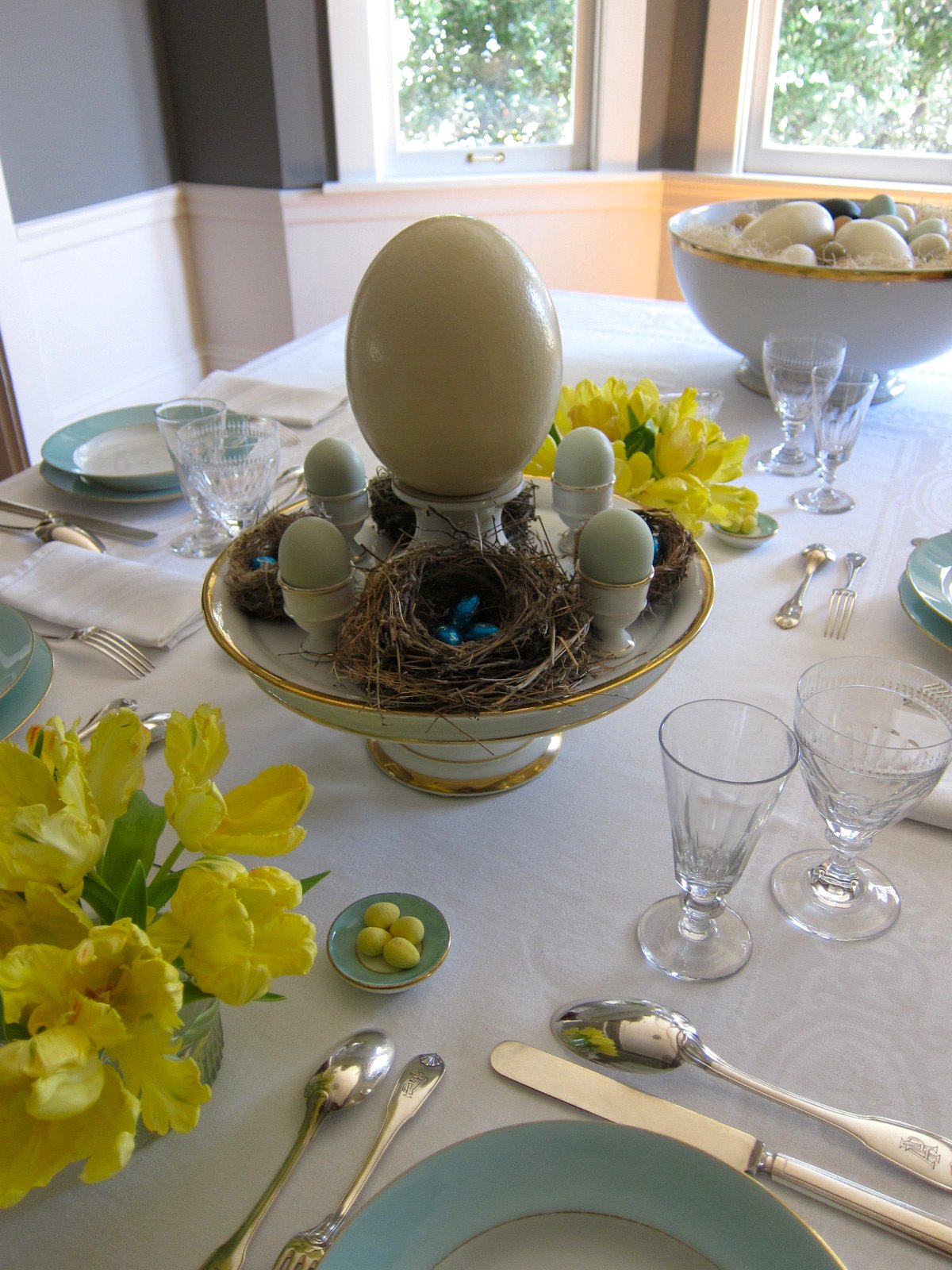A jaunty grouping of daffodils and ranunculus to brighten my kitchen
Photo: Chronica Domus
I have a particular weakness for daffodils, or narcissi as they are frequently called. These humble blooms have captivated my imagination with their beauty since childhood. They are, in fact, my favorite of all flowers. I am simply mad about them. My excitement each spring upon spotting the first alluring bunches at the flower market, or as they slowly emerge from the damp garden soil in clumps, never wanes. There are no words vivid enough to express how much joy these cheery little flowers bring to my soul. They are, quite simply, my happy pill.
Narcissus Thalia, my favorite of the whites and as pure as the driven snow
Photo: Chronica Domus
One of my earliest memories is of my father and I buying bunches of sunny daffs to present to my mother as a gift on Mothering Sunday. I could not have been more than six or seven years old at the time but those bright yellow trumpets captured and delighted my young mind.
Once my family and I moved away from London to live in Kent, a county known throughout the nation as "The Garden of England", something new revealed itself to tickle my fancy. It was a sight I had not previously seen within the confines of the country's capital city. Great naturalized drifts of golden daffodils buried in the grassy banks of roadsides and around the fruit orchards and church yards reared their bright heads year upon year. They shone like beacons among the misty light so synonymous with winter and early spring in that part of the world. How lucky I was to have witnessed this annual show, a cherished memory that will endure always.
Years later, I recall daffodils cropping up again, during Miss Bottle's English Literature class where we studied the poem of William Wordsworth and his evocative prose on the humble flower. Is there any more beautifully haunting opening line in poetry than the imagery conjured up by Wordsworth's "I wander'd lonely as a cloud"?
It seems that the yellow daffodil of my youth, namely Narcissus pseudonarcissus, has been eclipsed by the ubiquitous King Alfred, typically found for sale in every big box chain gardening center for pennies, alongside other overly-hybridized and overly-stiff specimens on offer. These too are what one sees for sale (mostly) by the bucket load at supermarket florists and the like at this time of year.
Make no mistake, when I write that daffodils are my favorite of all flowers, I am championing their daintier fairer kin in gentle shades of buttery yellow, cream, or white, often with hints of pink or fiery orange, or even green to elevate their beauty. These are what I crave and what I gently strongly encourage you too to seek out for your own garden or vase.
I am particularly fond of the older varieties and cultivate a number of them in my garden. Thalia (circa 1916), Avalanche (circa 1906), and Albatross (circa 1891), are three that grow reliably well for me. I look forward to cutting bunches of them as they come into bloom in succession if, of course, the eternal army of nocturnal snails, slugs, and earwigs have not munched upon their tender heads under the cover of darkness. I shy away from chemical warfare on my soil, and on the creatures that live within it, so enduring a little loss each season is a natural consequence of my philosophy. I just make sure to plant ample bulbs to be enjoyed in the flower beds and by some for my daffodil foes.
My interest in growing older varieties of daffodil began, strangely enough, with a visit to the quirky Welsh market town of Hay-on-Wye during the early 1990's. The place is a treasure trove of fascinating second-hand booksellers and shops that litter the town. Bibliophiles flock here from around the world in search of obscure publications to add to their personal libraries. No one leaves empty handed; it really is that good. Once I had recovered from the mind-numbing effects of visiting more bookshops in a single day than one could possibly imagine exhausting in a lifetime, I happily left town clutching three little volumes to add to my gardening library.
Even the castle walls of Hay-on-Wye are recruited to hold the overflow of books which burst from the seams of local shops
The Culture of Bulbs by Sir J.L. Cotter was one of them, and it was this volume that led me down the garden path to seeking out, and subsequently cultivating, one of the rarer daffodils illustrated within the black and white plates of the book. What, I wondered, as I gazed upon the illustration of the antique poeticus narcissus Albatross, did this bloom look like in living color, and why on earth would someone name a flower after a seabird? Sadly, Sir James had failed to provide his readers with even a line or two about this particular daffodil's charms. My inquisitive mind had found a botanical mission and I would not rest until I had my answers.
The Culture of Bulbs, the book that led to my "daffodilmania"
Photo: Chronica Domus
It took me over a decade and a half to finally lay my green fingers on this rare beauty. Flipping through my copy of Old House Gardens' charmingly written and illustrated catalog several years ago, I finally spotted it. Narcissus Albatross was waiting in the wings and all I had to do was place my order.
My well-thumbed copy of Old House Gardens' delightful catalog of heirloom bulbs
Photo: Chronica Domus
I was chuffed to finally get an opportunity to plant a few bulbs and see how they might perform in my garden. A handwritten note on my packing invoice tucked within my order made reference to the fact that the vendor had no idea if the flowers were scented, an aspect of their nature which I had not previously considered.
The sought after (at least by me) narcissus Albatross photographed alongside the black and white plate that inspired my desire to cultivate this heirloom jewel
Photograph: Chronica Domus
Registered in 1891 by Reverend Engleheart and named, interestingly, for his fondness of seabirds (as was narcissus Seagull, another of his creations), this beguiling dainty daffodil was everything I had wished it to be. Emerging from grayish green foliage so late in my garden as to take the prize for best latecomer to the party, it is sublime. It peaks just as my tulips fade.
The first of the blooms beginning to unfurl
Photo: Chronica Domus
The luminous graceful creamy petals are almost propeller like in form, whitening as they mature. Their frilly cups are painted a gentle shade of orange which intensifies towards the edge. The scent you ask? Well, yes, if one were to bury one's nose deep within the cup, a barely perceivable whiff is certainly present. The old reverend had obviously studied the albatross in flight enough to have seen a passing resemblance in this graceful bloom's nodding habit.
As though captured in flight, narcissus Albatross spreads its wings in the flower bed
Photo: Chronica Domus
Won't you join me in discovering the joys of growing older variants of the humble daffodil the next time you find your garden in need of a few cheery spring blooms? You will be amazed and delighted at the host of subtle colors and graceful shapes lacking in the larger steroid-pumped, modern varieties, as you rediscover what our grandparents once purchased as cut flowers or grew in their gardens.
Photo: Chronica Domus
Nota bene: I am neither paid nor do I receive recompense in exchange for applauding products or services within my blog. I do so because I enjoy them. If you are a kindred spirit, you too enjoy recommending nice things to fellow good eggs.





















